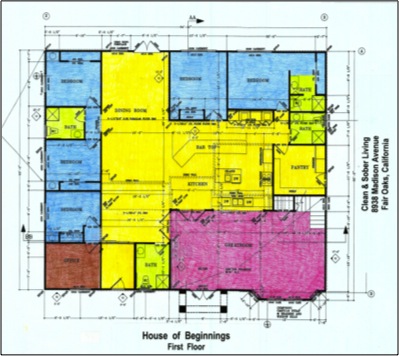|
Friedner Wittman: The Architecture of RecoveryTHE ARCHITECTURE OF RECOVERYBy Friedner Wittman
In the above illustration, the Clean and Sober Transitional Living (CSTL) recovery housing project, as many as one-third of the residents are coming ffrom detox facilities or jail after a period being homeless or living sporadcially on the streets. The most important part of the project is how to get the plan to reflect the program; the architecture, servicable or more exciting, must be seen as an outgrowth of the specific needs of this specific group of clients. It is a difficult, sometimes very difficult effort. The following two presentations discuss some of the parts of this effort. 2.1 "A CASE STUDY IN ARCHITECTURE FOR SOBER LIVING HOUSEHOLDS"A powerpoint presentation by Juror Friedner Wittman exploring the complexities of providing housing for a challenging population (continue reading). 2.2 "THE SETTING IS THE SERVICE: HOW THE ARCHITECTURE OF SOBER LIVING RESIDENCES SUPPORTS COMMUNITY BASED RECOVERY"An in-depth article analyzing the architecture of a community-based residential recovery service (continue reading). |

